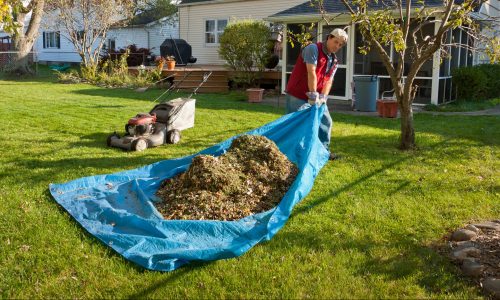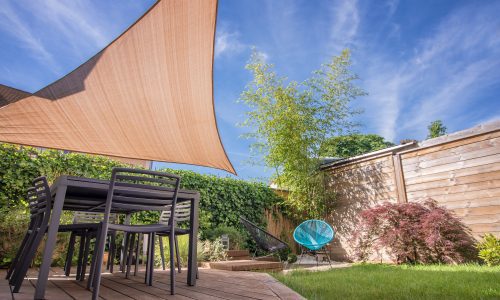The Best Climbing Plant Support

Our Review Process
Don't Waste Your Money is focused on helping you make the best purchasing decision. Our team of experts spends hundreds of hours analyzing, testing, and researching products so you don't have to. Learn more.
Our Picks For The Top Climbing Plant Supports
- 1. Garden Land Riveted Willow Sticks Expandable Trellis Climbing Plant Support
- 2. GROWNEER Moss Fiber Totem Coir Pole Climbing Plant Support
- 3. The Blooming Jungle Coconut Husk Coir Totem Pole Climbing Plant Support, 2-Count
- 4. LeJoy Garden Iron Round Obelisk Trellis Climbing Plant Support
- 5. Sago Brothers Reusable Non-Rusting Climbing Plant Support Clips, 40-Count
Real willow sticks support your climbing plants in an attractive and sustainable way. The lattice can expand to a size of 22 by 120 inches. Each connecting point between the sticks is held by high-quality rivets that are both strong and turnable.
Natural OptionMade from 100% real willow, this climbing plant support will enhance your garden in a natural way.
A 36-inch totem pole will hold all your climbing plants and creepers. The pole is made from coir moss fiber for a safe, natural addition to your garden. Plant labels make it easy for you to separate one plant from another, making it easy to identify which plant is which.
Great for Front PorchesThe attractive design of this pole makes it great for areas of high visibility, like front porches and walkways.
If you need help encouraging your creeping plants to grow, take a look at this totem pole, which is designed to boost plant growth by directing roots upward, toward the light. You’ll get two poles, each with two 120-centimeter pieces of string. Each stake is covered in coco coire, which is sourced from the husk around a coconut.
For Heavier GreeneryHeavy plants like monstera are no match for this sturdy totem pole plant support, which is strong enough to handle the weight.
A set of 40 clips will help you hold your plants, including flowers and fruits, in place while they grow. These attach to your stake or trellis to give your vegetation a little extra support while it grows. The clips are built with zinc-plated spring wire and built to resist rust, maintaining their grip throughout growing season.
Best for Fruit and VegFor growing fruits and vegetables, there are these clips that help keep your climbing plants in position.
Buying Guide
As plants evolved over the centuries, a certain breed of plant life emerged. Some plants, it was discovered, can continue to grow upward from the ground as they compete with other plants for sunlight and oxygen. When supported properly, those plants can be an eye-catching addition to any garden.
But there are different types of climbing plants. Some, like rambling roses, can cover an entire wall or tree, while others, like wisteria, are great for wrapping around poles or stakes. If you’re growing foods like tomatoes, you’ll find multiple tall stakes spaced relatively close together are best for maximizing your results.
When setting up your climbing plant support, it’s important that you choose something that will hold your vegetation in place without damaging it. For that reason, experienced gardeners tend to go with something a little softer in nature. Willow is popular for gardens because it’s soft and non-invasive. It’s also a natural addition to your garden that will add visual appeal.
Another route many gardeners go is to choose a stake or pole that’s wrapped in a softer material. You’ll see plenty of support options that are wrapped in coco coir, which is the hairy fiber of the husk that’s found surrounding coconuts. This gives you the support you need while also providing a safe surface for your plants while they’re growing.
Another way to ensure your plants are supported as they grow is through the use of clips. These can be attached your plants on a stake or pole and give that extra support where it’s needed. If you go for this option, make sure you choose one that won’t damage your plant or limit growth where it attaches.
There are plenty of options for supporting your climbing plant. The one you choose will probably be the best for your own unique space. As you create your garden, map out where you want your climbing plants to go so that you can find a pole or stake that fits.
What to Look For
- If you have a climbing plant, it’s important to note that you can train it to grow in the direction you need. In fact, most climbing plants need to be tied to something to keep them going in the right direction. This is especially important if you’re using your climbing plants for privacy. A little redirecting will help fill in those compromising gaps.
- Climbing plants aren’t just for outdoors. If you plan to plant indoors, you’ll need a trellis with a pot sturdy and wide enough to accommodate both your plants and your stake or pole.
- For your outdoor plants, make sure your chosen plant support can survive the elements. You’ll need something that not only holds up against gusts of wind, but that also resists breaking down after exposure to rain, ice, sleet and snow.
- Where you keep your climbing plants plays a role in the type of support you need. For high-visibility areas like your front porch or side garden, you might want an option that adds some visual appeal to those spaces. You can find arched trellises that bring out the color if you’re planting bright-colored flowers.
- If you’re planting a variety of climbing plants, you might want to consider garden labels that will help you identify what you’re growing. Make sure your labels can withstand various forms of weather.
- Some plants can weigh down a typical pole or stake. For those, you’ll need something a little sturdier that can support your chosen greenery.
- Clips can give your garden a little extra support. You can temporarily mount your most stubborn plants to your trellis or stake. You can find some with rust-resistant designs that will gently clip your greenery without damaging it.
More to Explore
Both climbing plants and vines operate similarly, but in some areas of the world, “vine” is used solely to refer to grapevines, while all other climbing types of plants are known as “climbers.” By and large, all climbing plants fall into the “vine” category.
There are two types of vines: climbers and creepers. Climbers naturally grow upward, needing no assistance from you aside from controlling the direction. Creepers, on the other hand, can serve as ground cover, giving you a wide swath of vegetation. Creepers can be redirected to take over a wall or trellis, but they require a little extra work from you to do so.















